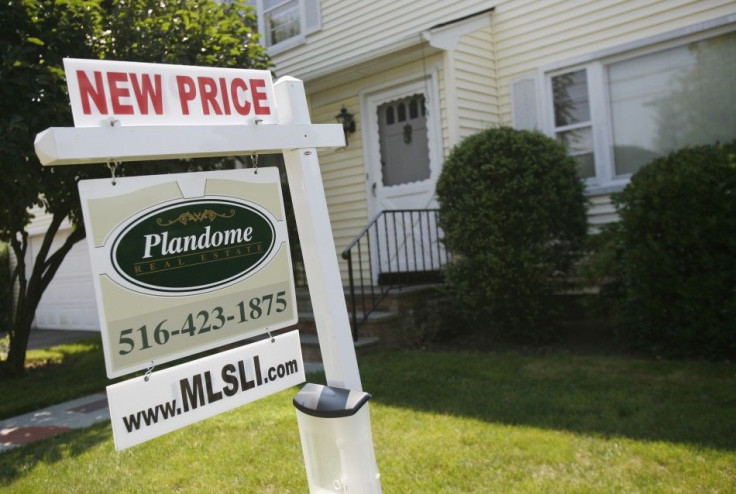This Is Not Your Father's U.S. Housing Sector

If there's one thing that the American people are confronting in the initial decades of the globalization era, it's change.
The United States used to be an economy and social environment characterized by commercial givens - basically economic realities you could count on.
An example: Real, median incomes will increase. Another: Median U.S. home prices will rise over a 10-year span.
Not so today - at least early in the globalization era. For example, housing - long considered an essential part of the American dream - does not appear to be that slam-dunk, no-doubt-about -it, appreciating asset that it was for decades - basically since the end of World War II in 1945 to the start of the Great Recession in 2007.
Home prices - stagnant for more than two years in many, major metropolitan areas - may continue to drift sideways for the rest of 2011, and probably for longer in many cities.
What's behind it? Several factors: stagnant real median incomes in many job segments, an overbuild of homes during the housing bubble, a mortgage finance market that still hasn't fully recovered from the financial crisis, and a flood of foreclosed homes that's swelled both new home and existing home inventories.
The new home sale market still has a 6.2-month supply at the current (May 2011) annualized sales pace of 319,000 units, according to data compiled by the U.S. Commerce Department. Meanwhile, the existing home sale market has a 9.3-month supply at the current (May 2011) sales pace of 4.8 million units, according to the National Association of Realtors. For both markets, a 2- to 3-month supply is considered normal.
In addition, U.S. home prices declined 4.0% in 20 major U.S. cities, on a year-over-year basis, according to data compiled in the S&P/Case-Shiller Home Price Index. April's drop was the largest year-over-year decline in 17 months.
However, prices in the 20-city index in April from March were down just 0.1% on a seasonally-adjusted basis, and unchanged in the 10-city index, Case-Shiller said, adding that it's too soon to tell if the decent seasonally-adjusted April data is a turning point, or simply due to a normal increase in demand in the Spring/Summer home buying season.
With the above as a backdrop, what's the appropriate stance for prospective home buyers? As a preface, very few rules will stop a couple or someone whose found their 'dream house.' Hence, if you've found it, and you feel you're going to be in the house for more than a decade, market conditions and cautions listed here aren't likely to stop you from purchasing it.
However, for those who haven't identified their dream house, keep in mind the following:
1-The mantra now is not how much house you can afford, but the minimum amount of house you need. True, if the market suddenly recovers, that $500,000 luxury home in Kansas City could appreciate into a $700,000 bonanza. However, if your local market stagnates, that luxury home could be worth $450,000 - or even less - in real terms, which means you'll struggle to recoup your initial investment. Lesson: Take on only as much house as you need, to minimize your downside risk.
2-Have you bought the best house or almost the best house in the neighborhood? In today's housing market, you must have everything right, from a home purchase research standpoint. And one key research item is the value of your home vis-à-vis those on its street and in your potential new neighborhood. That's because a sub-par neighborhood can decrease the value of your pricey home...and also make it harder to sell. Ideally, you want a house that's roughly in the middle, value-wise. Lesson: evaluate two houses to the left, two houses to the right, and a few across the street. If most are in worse condition than the one you're considering, skip it, and evaluate another house in a different neighborhood.
3-Did you factor-in another oil shock into your commuting budget? True, oil prices have dipped slightly in recent weeks, to about $92.55 per barrel, pushing regular unleaded gasoline down to about $3.56 per gallon. Hence, for now, $5 per gallon gasoline is out of the picture. For now. But what about 2012, 2013, and beyond? A $7 or $8 per gallon gas price is possible in the U.S. - particularly if the nation's supply of oil from the Middle East is disrupted for a sustained period. Lesson: Stress-test your commute. If the commute budget from your prospective house can't tolerate $8 per gasoline, consider a house that's closer to work and/or near a mass transit system.
The Great Recession and the changes triggered by globalization have removed much of the economic tailwind from the U.S. housing sector - realities that have made it much harder to realize home price gains. Hence, it goes without saying that thorough due diligence is required when considering a home purchase today, and the above three factors represent a good start.
© Copyright IBTimes 2024. All rights reserved.





















